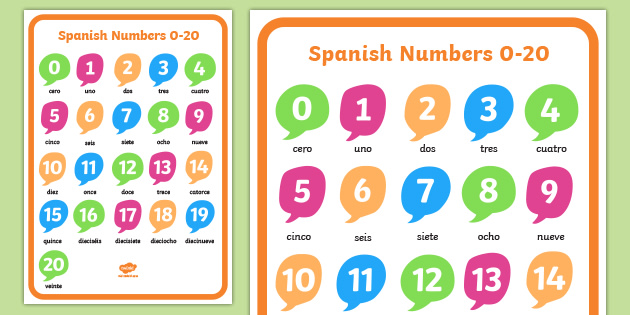

They’re the ones used in most mathematical equations and the ones you’ll see on your credit card bill. Now, let’s do a deep dive into each of the two forms of numbers in Spanish.Ĭardinal numbers are probably the first thing that comes to your mind when you think of numbers. So, although they’re the more basic of the two forms of numbers, that doesn’t make them any less exciting! Without cardinal numbers, we wouldn’t be able to specify quantities, do math, or even do business.

On the other hand, using cardinal numbers is also incredibly helpful as they, quite bluntly, make the world go round. Knowing that it was your first car can let us into some of the feelings and emotions you may have experienced when first driving it or what the car could’ve looked like. Using an ordinal number to describe the car tells us so much more about the car than the cardinal number ever could. That means that you can use them to describe another noun, changing the meaning of the noun they are modifying. The main thing you should keep in mind is that ordinal numbers work as adjectives. Ordinal vs cardinal numbers: the key differencesįirst things first, let’s review the key differences between ordinal and cardinal numbers in Spanish. The difference between ordinal numbers vs cardinal numbers.
#NUMBERS IN SPANISH UP TO 20 HOW TO#
In this blog, we’ll cover all the important differences and go over how to say hundreds of cardinal and ordinal numbers in Spanish to help you ace when to use the right form of each number. The same is true in Spanish, where mixing up ordinal with cardinal numbers every now and then might not do anything more than raise a few eyebrows, but it’s still very important for intermediate Spanish speakers and above to dominate when and how to use ordinal vs. You probably understand what both sentences mean, but the first one sounds wrong. For example, check out the following sentences:

cardinal numbers in Spanish will help you sound much more natural. However, how do you know when to differentiate between cardinal (one, two, three) and ordinal (first, second, third) numbers? Although people will probably be able to understand what you mean even if you use the incorrect form, mastering the difference between ordinal vs. Indeed, using the numbers in Spanish is one of the first skills any language learner should sign up to master, especially since you’ll need them to tell the time, buy fruits and veggies at the market, and order a second (but who’s counting?) cup of coffee. Check out this simple guide to ordinal and cardinal numbers in Spanish without any math prerequisites.Įven if you don’t consider your left side of the brain to be the stronger half (guilty!), you still need to use numbers on a daily basis - even in Spanish.


 0 kommentar(er)
0 kommentar(er)
